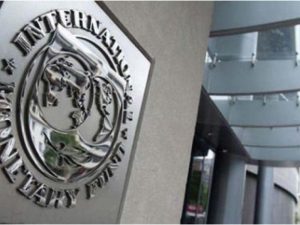In spite of Pakistan’s escalating power sector debt, relations between Pakistan and the IMF have not improved.
According to sources, the results of the virtual conference between Finance Minister Dar and the IMF Mission Chief were inconclusive.

ISLAMABAD: On Thursday, Pakistan and the International Monetary Fund (IMF) were unable to come to terms on a plan for recovering the Rs123 billion in monthly average power sector losses that are escalating the country’s already unmanageable cyclical debt.
According to sources, Ishaq Dar, the finance minister, and Nathan Porter, the head of the IMF mission, met virtually to discuss problems with the power industry. The 9th IMF review mission, which is necessary to approve the next loan tranche of more than $1.1 billion, has run into the biggest roadblock due to the electricity sector.
According to papers and government sources, the government contributed Rs393 billion to the circular debt over the period of July to September, and by the end of the month, it had nearly reached Rs500 billion.
The government has now further lowered downward its prior updated prediction of Rs800 billion receipts, therefore discussions also focused on the revenue collection from the fuel levy.
The meeting was still unsuccessful, and, in contrast to previous practise, the Ministry of Finance did not issue a news release.
According to the sources, the Pakistani side discussed a plan with the IMF that called for raising energy prices to cover interest payments on the circular debt stock as well as advance quarterly tariff increases.
The plan also called for paying off K-past-due Electric’s bills and providing subsidies for farm tube wells.
According to a government official, the IMF will study the plan and then provide its opinion. Both parties, he claimed, have agreed to keep the dialogue going.
The IMF board was required to approve the 9th review and release of the tranche by November 3rd in accordance with the amended timeline. However, the international lender has not yet sent a mission to Pakistan because the Pakistani government has not complied with the programme requirements for the 9th review.
According to the sources, the IMF is looking for a detailed plan for the power sector, taxation, and resolving any fiscal imbalances caused by three major factors: higher than agreed circular debt during the current fiscal year, higher than agreed primary budget deficit, and costs for flood rehabilitation and reconstruction.
The conference ended without reaching a decision on the day the State Bank of Pakistan disclosed that Pakistan’s gross official foreign exchange reserves had fallen to their lowest level in nearly nine years, totaling just $6.1 billion. The same day, Pakistan’s credit rating was lowered by Standard & Poor’s to ccc+, the lowest rating the worldwide agency has given a country since December 2008.
According to the sources, Pakistan and the IMF have differing perspectives on how to calculate the primary deficit, which is the difference between revenue and expenses after taking interest payments out of the equation. After taking into account the departures from the annual circular debt plan, the IMF calculates the gap.
The Prime Minister’s Office was notified this week that there will be between Rs700 billion and Rs803 billion in deviations from the Circular Debt Reduction Plan 2023 in the worst-case scenario. After accounting for the excesses, the circular debt—which was less than Rs2.4 trillion by June—has already increased to Rs2.8 trillion, according to the sources.
By passing the Electricity Theft (Control) Ordinance 2022, the government has promised to reduce losses brought on by poor bill recovery rates and greater transmission and distribution losses. The Ordinance will provide the Electricity Police the authority to apprehend the offenders and file formal criminal charges against them.
Similarly, the government has identified the feeders with large losses that will be isolated and labelled in order to reduce theft and boost recovery, the IMF was informed.
Due to bill recovery that were 10% below target during the first quarter, the government added Rs 104 billion to the circular debt. This deficit will be minimised in the upcoming months, it was promised to the IMF. Over Rs280 billion in losses were brought on by over 20% feeders annually. The line losses are greater than 60% at the Pishin, Loralai, Sibi, Khuzdar, Makran, Bannu, Dadu, and Larkana circles. There are another dozen cities where the losses range from 30 to 60 percent.
The Fund has been notified that a new Power Purchase Agreement will be inked with K-Electric to cover an additional estimated increase in circular debt of approximately Rs135 billion during the current fiscal year.
Similarly, discussions with the provinces over the rationalisation of subsidies for farm tube-wells have come to an end.
According to the sources, there was also a proposal to raise the current debt fee by an additional 60 paisa per unit, which would address the issue of a projected additional Rs65 billion departure from the agreed-upon annual plan.
Additionally, the government stated that the negative effects of the delayed implementation of the Rs7.91 per unit rise in electricity costs from July through October would be offset during the remaining portion of the current fiscal year.
Another concern was the quarterly rate increases’ delayed implementation and lower-than-anticipated collection as a result of fewer sales of power. Pakistan has promised that by guaranteeing 80% early recovery of the quarterly rates, this issue can be resolved.
In the event that the government is unable to address any of these issues, the price of energy will need to be raised by at least Rs2.37 per unit in order to make up for some of the losses from July to October.
In order to close the predicted Rs 700 billion deficit with the annual circular debt reduction strategy, the energy ministry had developed three possibilities. The energy ministry’s first recommendation called for the government to raise power costs by Rs31.60 per unit in order to raise Rs700 billion for five categories of consumers, excluding industrialists. Commercial, bulk, industrial, other, and general services are among them.
The second option was to raise prices across the board by Rs12.59 per unit. Power Minister Khurram Dastgir claimed that the plan had been created on the recommendation of the Finance Ministry and had been “shelved” by him as a minister after the article appeared in The Express Tribune.










































